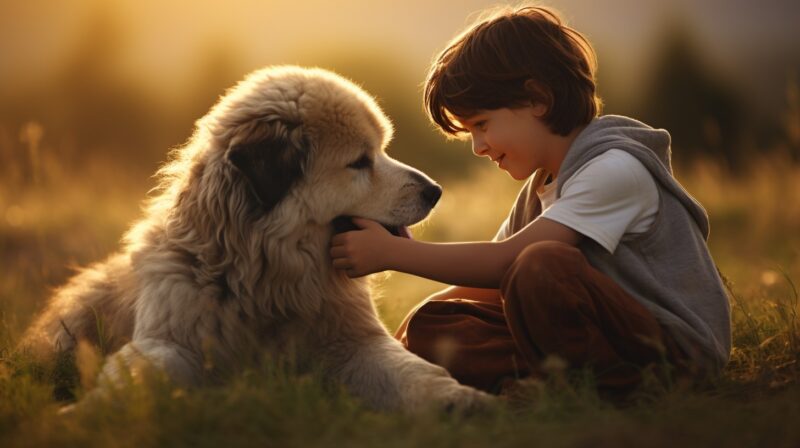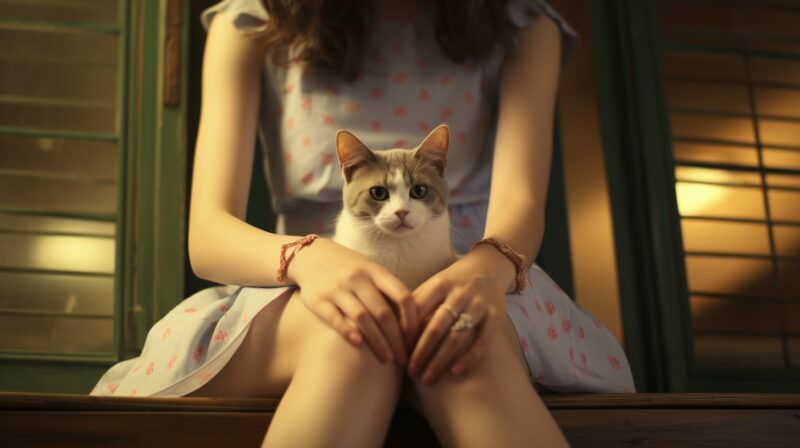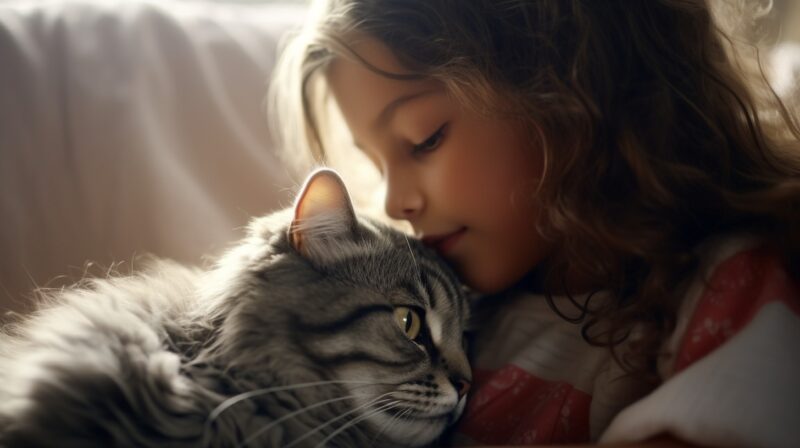🐾
Ever wondered why your furry friend, be it a dog 🐶 or cat 🐱, loves a good petting session, or why even birds 🐦 and reptiles 🦎 seem to enjoy a gentle stroke? It’s not just about them loving the attention; there’s a whole universe of reasons behind it that goes way beyond simple pleasure. From the intricate workings of their bodies to their emotional needs and even their survival tactics, animals getting stroked is a topic that’s as deep as it is wide. Let’s mix a bit of zoology, some vet science, and a dash of psychology to uncover why virtually every creature under the sun seems to be on board with this touchy-feely business.
Touch is not just a ‘nice-to-have’ in the animal kingdom; it’s absolutely central to life itself. It’s all about building connections, whether that’s the precious bond between mother and baby, figuring out who’s boss in the social pecking order, or even the flirtations in animal dating life. And then there’s stroking – that gentle, rhythmic touch that does more than just feel good. It’s like the supercharged version of grooming, which, by the way, is a big deal in the wild. Animals groom each other to keep clean, sure, but it’s also about making friends and keeping the peace. 🤗
This grooming gig is not just about looking pretty; it’s vital for health (goodbye, parasites!) and plays a massive part in creating a friendly, everyone-gets-along vibe. So, when animals enjoy a good stroke, it’s tapping into this deep-rooted instinct to connect and take care of each other. It’s nature’s way of saying, “Let’s stick together and help each other out.” 🌍💕
Physiological Basis of Enjoyment
Ever wonder what’s going on under the fur (or scales) when you give your pet a loving stroke? It’s all about hitting the right nerve – literally! When you pet your furry friend in that slow, gentle way they love, you’re actually activating some pretty special nerve endings called C-tactile afferents. These little guys are super sensitive to the kind of touch that says, “I care,” and they’re all about those soft, soothing strokes.
Here’s where it gets cool 😎: once you’ve got those nerves buzzing, they shoot signals straight to the brain – bam! – hitting the jackpot in areas that light up with feelings of reward and happiness. We’re talking the prefrontal cortex, a real VIP lounge where all the feel-good chemicals hang out. And then, there’s the grand entrance of oxytocin, famously known as the “love hormone.” Oxytocin is like the warm hug of the hormone world, fostering bonds and wrapping the brain in a cozy blanket of comfort and security.
But wait, there’s more! This whole stroking business isn’t just about feeling good in the moment. It’s a stress-buster and anxiety-reliever, too, playing a big part in keeping your animal buddy healthy and happy. So, next time you’re giving some love with a gentle pat, remember, it’s not just a simple caress; it’s a full-on, nerve-tingling, brain-boosting, bond-building super stroke! 🌟💕
| Animal | Favorite Points to be Stroked |
|---|---|
| Dog | Behind the ears, belly, base of the tail |
| Cat | Under the chin, base of the tail, behind the ears |
| Horse | Neck, back, withers (the area where the neck meets the back) |
| Rabbit | Back of the neck, back, top of the head |
| Bird | Under the chin, around the cheeks, back of the neck |
| Guinea Pig | Under the chin, behind the ears, back |
| Ferret | Under the chin, along the back, belly |
Psychological Comfort and Security

Beyond the physiological responses, the act of being stroked offers psychological comfort and security to animals. It can be particularly observed in domestic pets, where the human-animal bond replicates aspects of the parent-offspring relationship. 🗣️❤️
Animals, much like humans, experience feelings of security and comfort when they are touched gently, which echoes the care and affection they receive from their caregivers. This psychological aspect is crucial in understanding why animals seek out and enjoy being stroked; it reaffirms their social bonds and places them in a state of emotional well-being.
Evolutionary Perspectives
Way back in the day, when mammoths roamed and sabertooth tigers were the talk of the town, the animals that loved a good cuddle had a secret weapon. It wasn’t just about enjoying a cozy moment; it was about survival, baby! 🌟
In the wild, animals that were all about that touchy-feely life had a leg up. Imagine a group of early ancestors huddling together, grooming each other after a long day of foraging or evading predators. This wasn’t just spa day; it was crucial for building strong bonds and teamwork. Those who were into physical contact were the ones who stuck together, hunted in packs, and watched each other’s backs. 🐺👀
And there’s more to it. Being cool with getting up close and personal meant animals could check each other for ticks, wounds, or anything funky that could mean trouble for the tribe. This hands-on approach was the early version of a health check-up, keeping diseases at bay and making sure everyone stayed in tip-top shape. 🚑
So, when we see our pets or other animals enjoying a good scratch or cuddle, it’s not just a cute quirk. It’s a throwback to their ancestors, who figured out early on that sticking together (quite literally) was the way to go. The love for a good stroke or snuggle has been passed down through the ages, a testament to the power of touch in keeping social bonds strong and survival odds even stronger. Evolution, you clever thing, turning cuddles into a superpower! 🦸♂️💪
The Influence of Domestication

As soon as humans started inviting animals into their homes (or caves, to be more historically accurate), something pretty cool happened. Through the magic of selective breeding, we started favoring the critters that were a bit more into us — the ones that didn’t mind a pat, cuddle, or even a full-blown hug session. Over generations, this turned into breeds of dogs and cats that didn’t just tolerate human touch; they absolutely loved it! 🐾❤️
But here’s where it gets spicy: not all fluff balls are made the same. Just like humans, every animal has its own personality and preferences. Think of it like ice cream flavors; some might crave the classic vanilla petting sessions, while others are all about that exotic mango-scented scratch behind the ears. 🍦🐕
This individual taste in snuggle style isn’t just random. It’s shaped by a cocktail of factors — from the breed and their big ol’ family tree to their personal adventures and even how they’re feeling that day. A kitty raised in a love bubble might be all about those cuddles, while a more independent feline explorer might prefer a respectful nod from afar. 🐈🌍
FAQs
Can all animals sense and respond to being stroked in the same way?
No, not all animals have the same sensory capabilities or social behaviors that make them responsive to stroking. The presence and distribution of C-tactile afferents, the nerve fibers responsible for sensing gentle touch, vary among different species. For instance, mammals are more likely to have these nerve endings and enjoy being stroked, whereas reptiles might not respond in the same manner due to differences in their sensory systems and social behaviors.
Does the preference for being stroked change as animals age?
Yes, the preference for being stroked can change as animals age. Young animals, especially those in species that are highly social, might seek more physical contact as part of their bonding and exploratory behaviors. As animals age, their preferences can change based on their health, changes in their social environment, and past experiences with being touched.
Are there any health benefits for animals from being stroked, aside from stress reduction?
Beyond stress reduction, stroking can have several other health benefits for animals. It can improve circulation, aid in the detection of health issues such as lumps or infections early on, and for some pets, regular grooming or stroking can help manage their fur or skin condition, reducing the risk of mats or parasites.
How do animals communicate their consent or desire to be stroked?
Animals communicate their desire for physical contact through body language and vocalizations. A dog might show its belly or nuzzle a person’s hand, while a cat might purr and rub against a person. Paying attention to these signals, as well as signs of discomfort or disinterest (like pulling away, growling, or hissing), is crucial for respecting an animal’s boundaries.
Can stroking be used as a form of therapy for animals?
Yes, stroking can be used as a form of therapy for animals, known as pet therapy or animal-assisted therapy. It is especially beneficial for animals in shelters or those who have experienced trauma, as the gentle, reassuring contact helps build trust and reduce anxiety. For humans, interacting with animals through stroking can lower blood pressure, reduce stress levels, and increase feelings of happiness.
Is it possible for an animal to not like being stroked at all, and if so, why?
Yes, it is possible for some animals to not enjoy being stroked at all. This could be due to a variety of reasons, including past negative experiences associated with touch, innate personality traits, or even medical issues that make touch uncomfortable or painful. It’s important to respect these preferences and not force physical contact, as it can lead to stress and anxiety for the animal.
Final Words
The enjoyment animals derive from being stroked is a complex phenomenon that encompasses physiological, psychological, and evolutionary factors. The act of stroking taps into deep-rooted mechanisms that promote health, social bonding, and emotional well-being.
It serves as a reminder of the interconnectedness between humans and animals and the universal need for touch and companionship. As we continue to explore and understand the multifaceted nature of animal behavior, it becomes increasingly clear how much we share with our non-human counterparts in our basic needs and pleasures.
🐶💕🐱
Related Posts:
- 8 Monogamous Mammals - The Rarest Trait in the…
- What Does Squirrel Poop Look Like? - Warning-Contains Nuts
- What Does Frog Poop Look Like? - Analyzing the Appearance
- How to Use a Tumbling Composter: How to Use it Like a Pro
- 10 Arctic Ground Squirrel Facts, Pictures & Video:…
- What Sounds Does A Chipmunk Make: Study In Animal…








